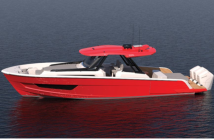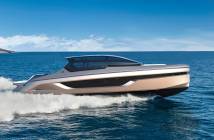The Boat US Catastrophe Team has some 36 years of experience in studying what happens to boats in a hurricane. They’ve gone through the insurance claims, resulting from hurricanes. And they’ve learned some lessons that can help you prepare your boat, so that you can avoid, or minimize, the damage.
First, many people underestimate the damage of a surge, which not only raises the water level far above normal, but also forces evacuation and lifts boats well above their docks and pilings. Surge accounts for the major damage to boats because it puts docks and dock lines underwater. Hurricane Sandy in 2012 set a new surge record of 14 feet in parts of New York.
A storm surge can flow over low-lying breakwaters, and when a surge hits at high tide, the consequences can be catastrophic. As a storm make landfall, water levels more than ten feet above normal high tide are possible. And dangerous high tides can reach out 20 to 50 miles from a storm’s center.
Waves also are a basic problem, and they can rise to surprising heights even in small harbors and bays. Sea walls, barrier beaches and structures that normally protect docks and moorings can be submerged. Waves can wash over boats at the same time that they’re getting pounded by torrential rain. BoatUS says that boat owners should not rely on their bilge pump to keep up with the water flow: “The ability of a bilge pump and battery to handle rain accumulation is greatly overestimated.”
Unfortunately, hurricanes seem to be getting worse. Hurricane Irma, which swept across Florida in 2017, was the strongest hurricane ever recorded in the Atlantic.
The best way to protect your boat, according to this study, is to haul it ashore. Even if boats are tipped off jack stands or cradles by rising water, the damage is less than it would be if they were left in the water.
On land, the best protection comes from strapping the boat down to eyes imbedded in concrete. At least two marinas in Florida did this in Irma with excellent results.
The first thing to do, however, is to develop a plan. Indeed, BoatUS insurance claims show that the “probability of damage can be reduced considerably by choosing the most storm-worthy location possible and having your plan long before a hurricane warning is posted.” Read more:
https://www.boatus.com/hurricanes/assets/pdf/swhurr_prep_guide.pdf




